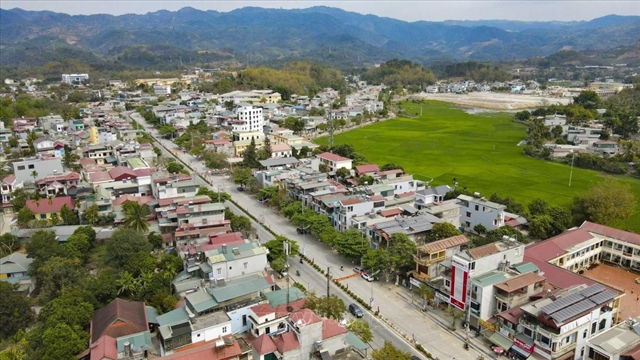 Society
Society

The capital city of Hà Nội has many areas which become waterlogged during heavy rain because of its outdated and overloaded drainage system, said Kinh Tế & Đô Thị (Economy & City) Newspaper.
 |
| The capital city of Hà Nội has many areas which become waterlogged during heavy rain because of its outdated and overloaded drainage system.– Photo baodautu.vn |
HÀ NỘI – The capital city of Hà Nội has many areas which become waterlogged during heavy rain because of its outdated and overloaded drainage system, reported the Kinh Tế & Đô Thị (Economy & City) Newspaper.
In recent years, the city has grown significantly, with the formation of many new urban centres and industrial parks, as well as a rapidly increasing population.
However, investment in drainage infrastructure has not kept pace with development, while abnormal weather poses challenges to the sewer system, the paper said.
Figures from Hà Nội’s Department of Construction show that there are 19 waterlogging hotspots on main roads and 180 areas on small streets and lanes across the city.
The current drainage system is designed for rainfall of up to 100mm. Along with low drainage capacity, the system has also deteriorated over the years. This means that many roads are quickly flooded during heavy rain.
The city’s drainage facility of 0.46m per person was much lower than world standard of 2m per capita.
Construction of infrastructure has reduced irrigation reservoirs and areas of pervious ground, exacerbating the city’s waterlogging problem, said the paper.
Associated Prof. Dr. Mai Thị Liên Hương, director of the Infrastructure Department under the Ministry of Construction, said that “at present, the city’s drainage system consisted of sewers, canals, lakes, rivers and pumping stations, providing drainage for the inner city and irrigation for agricultural production.”
“In general, the system was degraded and overloaded, causing local flooding during heavy rain,” Hương was quoted as saying.
Hoàng Mai Hương, an official from Hà Nội’s construction department, said the waterlogging was due to the overlapping implementation of drainage work.
“At present, a drainage area was operated and maintained by several units. This was not effective,” said Hương.
The local government has not yet issued regulations or sanctions for violations which have caused difficulties for management work, she said.
Software needed
The city’s drainage system consists of three main regions – east and west of the Đáy River, and north Hà Nội, spanning 47,300ha, 31,300ha and 46,700ha, respectively.
The drainage to the east of the Đáy River region was to pump water to the Hồng, Nhuệ and Đáy rivers, while water flows automatically via the west of the Đáy River region to the rivers Tích, Đáy and Bùi.
And in the north Hà Nội region, water discharges to the Hồng, Đuống and Cà Lồ rivers.
Over recent years, the city has implemented many projects to tackle flooding, such as the second phase of the inner city Tô Lịch river basin to ensure rain water drainage of 310cu.m per hour for rivers and 70mm per hour for culverts, and projects to restore 11 ponds in the city.
However, to solve the problem, the city needs to consider hi-tech methods in drainage.
“Hà Nội needed to think about software to manage drainage facilities, including matters of asset management, operation, maintenance and data collection,” the expert said.
The city should have policies to attract investment in drainage projects with ODA funds or under public-private partnership (PPP), she said.
It is also necessary to stop people littering in sewers, canals and rivers, Hương said. – VNS




